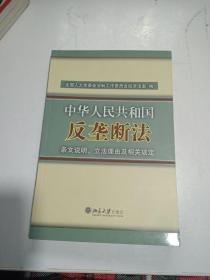
租船实务与法律(英文版)/双语教材
¥ 16 4.1折 ¥ 39 九品
仅1件
湖南怀化
认证卖家担保交易快速发货售后保障
作者郭萍、吕方园 著
出版社高等教育出版社
出版时间2017-05
版次1
装帧平装
货号5gf
上书时间2024-09-21
- 店主推荐
- 最新上架
商品详情
- 品相描述:九品
- 内页干净,如图所示
图书标准信息
- 作者 郭萍、吕方园 著
- 出版社 高等教育出版社
- 出版时间 2017-05
- 版次 1
- ISBN 9787040473759
- 定价 39.00元
- 装帧 平装
- 开本 16开
- 纸张 胶版纸
- 页数 264页
- 字数 440千字
- 正文语种 简体中文,英语
- 丛书 双语教材
- 【内容简介】
-
《租船实务与法律(英文版)/双语教材》集租船实务和法律于一体,分别阐述了有关租船运输的基础知识、租船合同的订立程序、租船市场概况、并以标准航次租船合同(GENCON),标准定期租船合同(NYPE、BALTIME)以及标准光船租赁合同(BARECON)等格式为例,阐述不同类型租船合同的主要条款和内容,并针对租船合同下签发提单的有关法律问题进行探讨。
《租船实务与法律(英文版)/双语教材》可作为海商法、外贸运输、航运管理等专业本科生及教师的教材或参考书籍,对从事租船运输实务、货运代理与无船承运业务、船舶代理业务、海上保险、国际贸易以及司法实践的相关人员和公司亦有一定的参考价值。 - 【目录】
-
Chapter 1 General Introduction
Section 1 General Introduction of Tramp Shipping (I)
1.1 What is tramp shipping?
1.2 Characteristics of tramp shipping
1.3 Kinds of tramp shipping
Section 2 General Introduction of Tramp Shipping (II)
2.1 What is chartering?
2.2 Different kinds of chartering
2.3 Differences between time charter and voyage charter
Section 3 Charter Party
3.1 The meaning of charter party
3.2 Voyage Charter Party
3.3 Time Charter Party
3.4 Bareboat Charter Party
Section 4 Entering into C/P & Standard Form
4.1 Making of C/P: chartering broker
4.2 Forms of C/P
Section 5 Law and Shipping Customs Relating to Charter Parties
5.1 Application of Chinese Maritime Code
5.2 International Shipping Practices
Section 6 Chartering Market
6.1 Purpose on learning the chartering market
6.2 Kinds of freight markets
Chapter 2 Voyage Charter Party
Section 1 Representations under Voyage Charter Party
1.1 Introduction
1.2 Representations and misrepresentations
Section 2 Main Provisions on Representation
Section 3 Preliminary Voyage & Loading/Discharging
3.1 Preliminary voyage
3.2 Loading/discharging clause
Section 4 Duties of the Charterer to Provide Cargo
4.1 Sorts of cargo
4.2 Quantity of cargo
4.3 Specified duties of the charterer
Section 5 Laytime/ Demurrage/ Dispatch Money (I)
5.1 Understanding of Laytime
5.2 Definition of"days" as laytime
Section 6 Layfime/ Demurrage/ Dispatch Money (II)
6.1 Commencement and end of laytime
6.2 Problems arising from berth contract
Section 7 Laytime/Demurrage/Dispatch Money (III)
7.1 Definition of Demurrage/Dispatch Money
7.2 Calculation
Section 8 Other Clauses under GENCON 1994
8.1 Responsibilities and exceptions of shipowner
8.2 Deviation clause
8.3 Lien clause/cesser clause
Section 9 Law and Arbitration Clause
9.1 General introduction of law and arbitration clause
9.2 CMAC model arbitration clause
Chapter 3 Time Charter Party
Section 1 Representation under Time C/P
1.1 Nature of time charter party
1.2 Definition of key words and terms
1.3 Representation
Section 2 Shipowners/Charterers to Provide
2.1 Importance of the clause of shipowner/charterer to provide
2.2 Shipowners to provide
2.3 Charterers to provide
Section 3 Period of Hire
3.1 Introduction
3.2 Standard form
3.3 Usual clauses on period of hire
Section 4 Delivery of Vessel
4.1 Date, place and condition of delivery
4.2 Place of delivery
4.3 Condition of delivery
Section 5 Redelivery of Vessel
5.1 Introduction of redelivery of vessel
5.2 Time ofredelivery
5.3 Conditions of redelivery
5.4 Ordinary tear and wear
5.5 Legal effect
Section 6 Payment of Hire
6.1 Standard clause
6.2 Common terms in practice
Section 7 Withdrawal of Vessel
7.1 Condition of withdrawal
7.2 Limits to exercise withdrawal
7.3 Legal effect of withdrawal
7.4 Waiver of right to withdraw
Section 8 Off-hire
8.1 Standard clauses on off-hire
8.2 Common provisions of off-hire
Section 9 Responsibilities and Obligations of Shipowners
9.1 Initial seaworthiness
9.2 Maintenance seaworthiness
9.3 Shipowners to provide
9.4 Reasonable dispatch
9.5 Customary assistance
Section 10 Responsibilities and Obligations of Charterers
10.1 Charterers to provide
10.2 Safety of port/berth
10.3 Definition of safe port
10.4 Scope of safe port
10.5 When to warrant the safety of port?
Section 11 Exception Clause
11.1 Exception clauses under standard forms
11.2 Common nature of exception clauses
Section 12 Employment and Indemnity Clause
12.1 Employment and indemnity clause under standard forms
12.2 Chinese law on the issue of employment and indemnity
12.3 Problems under supervision of master
12.4 Who shall be responsible for damages caused by the stevedore?
Section 13 Trading Limits Clause
13.1 Trading limits clause under standard forms
13.2 Chinese law on the issue of trading limits
13.3 Understanding of trading limits clause
Section 14 Lawful Merchandise Clause
14.1 Lawful merchandise clause under standard forms :
14.2 Chinese law on the issue of lawful merchandise
14.3 Understanding of lawful merchandise clause
Section 15 Sub-let Clause
15.1 Sub-let clause under standard forms
15.2 Understanding of sub-let clause
Chapter 4 Bareboat Charter Party
Section 1 Delivery Clause
1.1 Definition of bareboat charter party
1.2 Main provisions of bareboat charter party under BARECON
1.3 CMC provision on the delivery of vessel
Section 2 Inspection Clause
Section 3 Maintenance and Operation Clause
3.1 Maintenance and operation clause under BARECON
3.2 CMC provision on maintenance and operation
Section 4 Hire Clause
4.1 Hire clause under BARECON
4.2 Problems in practice
4.3 Chinese law on payment of hire
Section 5 Mortgage Clause
5.1 Mortgage clause under BARECON
5.2 CMC provision on mortgage
Section 6 Insurance and Repairs
6.1 Insurance clause under BARECON
6.2 Chinese provisions on insurance
Section 7 Redelivery Clause
Section 8 Non-lien Clause
8.1 No possessory lien or maritime lien
8.2 Notice fastened on board
8.3 The indemnity clause
8.4 Security
8.5 CMC provision on the effect of non-lien clause
Section 9 Lien and Wreck Removal Clause
9.1 Lien clause
9.2 Wreck removal clause
Section 10 Assignment and Sub-demise Clause
10.1 Assignment & sub-demise clause under BARECON
10.2 Chinese law on the issue of assignment and sub-demise
Section I 1 Bareboat Charter Party with Hire Purchase Clause
11.1 Transferring title of property and risks
11.2 Risks and expenses for sale of ship
11.3 Taxes and charges under purchasing contract
11.4 Costs for dispatch of crew
Chapter 5 Bill of Lading under Charter Party
Section 1 General Introduction
1.I Bill of lading issued under C/P
1.2 B/L under C/P and ordinary ocean B/L
1.3 Differences between B/L under C/P and ordinary ocean B/L
1.4 Identify B/L under C/P and ocean B/L
Section 2 Incorporation Clause
2.1 Incorporation clause and B/L under C/P
2.2 Understanding of incorporation clause and its validity
2.3 Which contract may be incorporated into B/L
2.4 Common incorporation clauses
2.5 Problems on incorporation of arbitration clause
Section 3 B/L clauses under C/Ps
3.1 B/L clause under voyage charter party
3.2 B/L clause under time charter party & bareboat charter party
3.3 Few situations of refusing to sign B/L
3.4 Meaning of"Without prejudice to
Section 4 Identifying the Carrier and Demise Clause
4.1 Identify the carrier in case of B/L under C/P
4.2 Demise clause
References
Author's Note
点击展开
点击收起
相关推荐
— 没有更多了 —






























以下为对购买帮助不大的评价